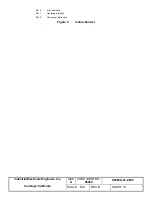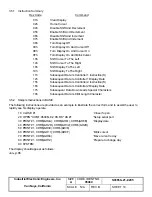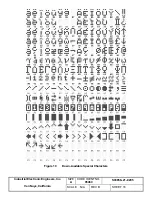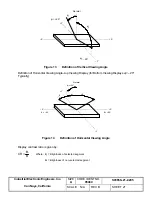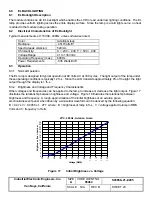
Industrial Electronic Engineers, Inc.
SIZE
A
CODE IDENT NO.
05464
S03858–21–0205
Van Nuys, California
SCALE N/A
REV B
SHEET 24
8.3.2
Brightness, Voltage and Frequency Characteristics (Continued)
25ºC, 115 VRMS, Aviation Green
0
2
4
6
8
10
12
14
16
18
20
22
24
26
28
30
32
0
50
100
150
200
250
300
350
400
450
500
550
600
Frequency (Hertz)
Brightness (foot–Lamberts)
Figure 18
Initial Brightness vs. Frequency
8.3.3
Intermittent Operation
The EL backlight is intended for intermittent usage only. Continuous operation will result in greatly reduced life
of the lamp. The user is cautioned to observe the notes in Section 8.3.5 and 8.3.6 to assure lifetime of the EL
backlight.
8.3.4
Square Waveform Operation
Square wave operation is not recommended for EL lamps. First, square wave operation can result in a non–
uniform light emission over the surface of the lamp. This non–uniformity is a result of the relatively high sheet
resistivity of the front electrode causing an attenuation of the high frequency components in the square wave as
distance from the bus bar increases. Consequently, the waveform is rounded at distances away from the bus
bar. Second, the leading edge of a square wave contains high order harmonics which may cause radio
interference (EMI).
8.3.5
Operating Temperature
The maximum continuous operating temperature for the EL backlight is specified at 40°C. Service may be
extended to 70°C at a sacrifice in life. At temperatures above 70°C, aging is so rapid the prolonged operation is
impractical. The specified non–operating temperature range –40°C to +85°C.
8.3.6
Operating Life
One of the prominent characteristics of EL lamps is the gradual decrease in light output, or aging, which occurs
during operation. The useful life of the EL lamp depends on the ambient lighting conditions for a particular
application. Typical lifetimes of 2000 to 10000 hours should be expected for most applications. The life of a
lamp is affected by a number of factors, including the particular EL phosphor, the drive parameters (voltage and
frequency) and the temperature during operation.
Figure 19 shows the gradual decrease in EL light output over time at 25°C with the inverter specified in Section
8.5. The brightness values are measures of the lamp surface brightness. The transmitted light through the




